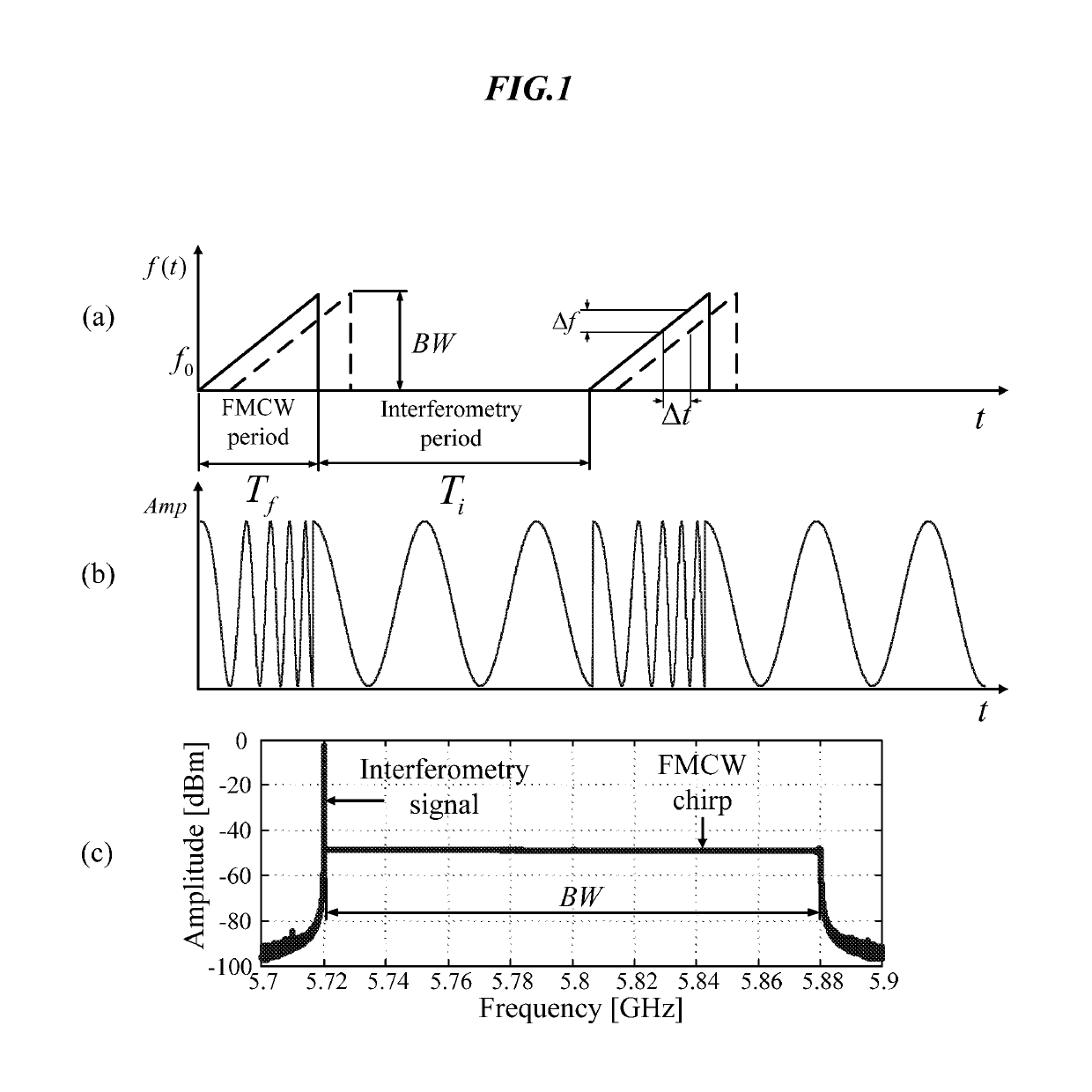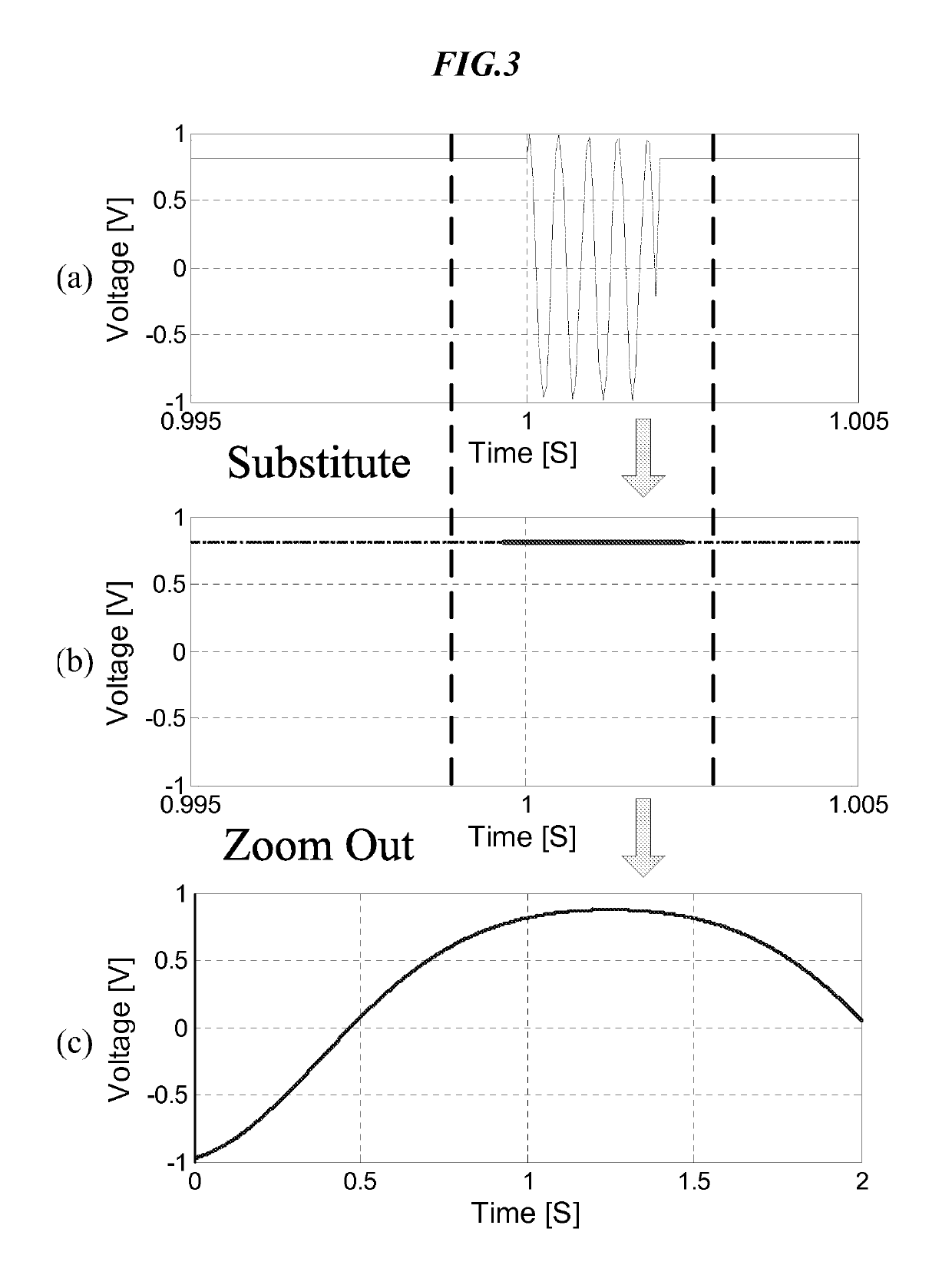Hybrid FMCW-interferometry radar for positioning and monitoring and methods of using same
a technology of interferometry and hybrid fmcw, applied in the field of localization and monitoring, can solve problems such as difficulty in locating the position of living organisms, and achieve the effects of low side lobe, high isolation, and high gain
- Summary
- Abstract
- Description
- Claims
- Application Information
AI Technical Summary
Benefits of technology
Problems solved by technology
Method used
Image
Examples
example 1
[0072]In applying the system of the present invention to an exemplary embodiment, a set of experiments was carried out to evaluate the performance of the proposed hybrid radar system before the indoor 2D positioning and life activates monitoring experiments.
[0073]To evaluate the range detection performance, a cart carrying a piece of metal plate was moving along a ruler from 3 feet (91.44 cm) to 14 feet (426.72 cm) with a step size of 6 inch (15.24 cm). Calibration was performed when the target was 5 feet (152.40 cm) away from the antennas. The detected beat frequencies were compared with the calibration beat frequency and the difference in beat frequencies should be linearly proportional to the difference in range. FIG. 7 shows the normalized range spectra at 3 feet, 8 feet and 13 feet respectively. In the case of 3 feet distance, the TX-to-RX coupling and clutter are overwhelmed by the strong reflected signal from the target. The complete detected beat frequencies and the correspo...
example 2
Micro-Doppler Gesture Recognition
[0079]FIG. 14(a) depicts the micro-Doppler information of a series of motions performed by a person facing the radar system of the present invention. The subject changed from standing to sitting on a chair, and then waved his arm twice. When sitting down, most parts of the upper body moved backward, producing a large negative Doppler frequency component at A. Meanwhile, some other parts such as the head moved forward and created a positive frequency at B. When the bottom reaches the seat, the upper body approaches towards the seatback and creates another significant negative Doppler frequency at C. During the arm waving action, the subject lifted his arm from the armrest and laid it down immediately, with the elbow serving as the pivot. Correspondingly, on the spectrum there was a negative frequency (D) followed by a positive frequency (E). Between these actions, the target just sat still. FIG. 14(b) describes another series of motion of a subject wh...
PUM
 Login to View More
Login to View More Abstract
Description
Claims
Application Information
 Login to View More
Login to View More - R&D
- Intellectual Property
- Life Sciences
- Materials
- Tech Scout
- Unparalleled Data Quality
- Higher Quality Content
- 60% Fewer Hallucinations
Browse by: Latest US Patents, China's latest patents, Technical Efficacy Thesaurus, Application Domain, Technology Topic, Popular Technical Reports.
© 2025 PatSnap. All rights reserved.Legal|Privacy policy|Modern Slavery Act Transparency Statement|Sitemap|About US| Contact US: help@patsnap.com



